Menopause yoga: these five moves promise to help ease hot flushes, fatigue and more
Suffering with your symptoms? This may help.

Suffering with your symptoms? This may help.
Ever heard of menopause yoga? In short, it's a type of yoga aimed at helping women experiencing menopause symptoms ease the negative impact on their day-to-day.
You'll know that hormone replacement therapy (HRT) is the main treatment prescribed by doctors in the UK at current, but may not have heard of the holistic lifestyle changes - like yoga - that can also help.
Supplementation is popular - some believe collagen can help, while research by the National Institute of Health (NIH) found Vitamin E can significantly ease hot flush discomfort. Similarly, some opt for acupuncture - one Danish study showed that in just five weeks, it reduced the number of hot flushes, night sweats, sleep disturbances and emotional problems women experienced. And, of course, there's menopause yoga. But what actually is it and how is it any different to your standard yoga class?
Ready to get your zen on and try it for yourself? Keep scrolling. Don't miss our pick of the best lululemon Black Friday deals, while you're here.
What is menopause yoga?
As Petra Coveney, a qualified yoga teacher with Yoga Alliance Professionals and the author of Menopause Yoga explains, it's simply a combination of yoga poses, breathing exercises and mindful movement that's been designed to help women going through the menopause.
"Menopause yoga is a natural approach which can help women manage their psychological symptoms while also reducing the risk of osteoporosis and heart disease," she continues.
Fun fact: since 2019 alone, leading professional body for yoga teachers and trainers Yoga Alliance Professionals has seen a 300% increase in the number of training courses and events for menopause yoga, and one randomised control trial published in the journal Menopause found that menopause yoga improve sleep quality and reduce insomnia among menopausal women, Coveney adds.
Marie Claire Newsletter
Celebrity news, beauty, fashion advice, and fascinating features, delivered straight to your inbox!
Menopause yoga: 4 benefits
It can improve your mental health
Did you know? 34% of women report increased rates of anxiety and depression as a result of the menopause and, one study by Boston University School of Medicine, New York Medical College and Harvard and Columbia University found that yoga might just help.
They found that people assigned to take high or low 'doses' of yoga - including breathing exercises - had improved mental health conditions like depression and anxiety at the end of the three month trial. So there you have it - menopause yoga could help boost your mental health.
It can ease symptoms
Yoga can help to ease hot flushes, sleep problems and more, but can further help during the transition from perimenopause to menopause, shares Coveney. "This is when the hormone fluctuations are at their worst," she adds.
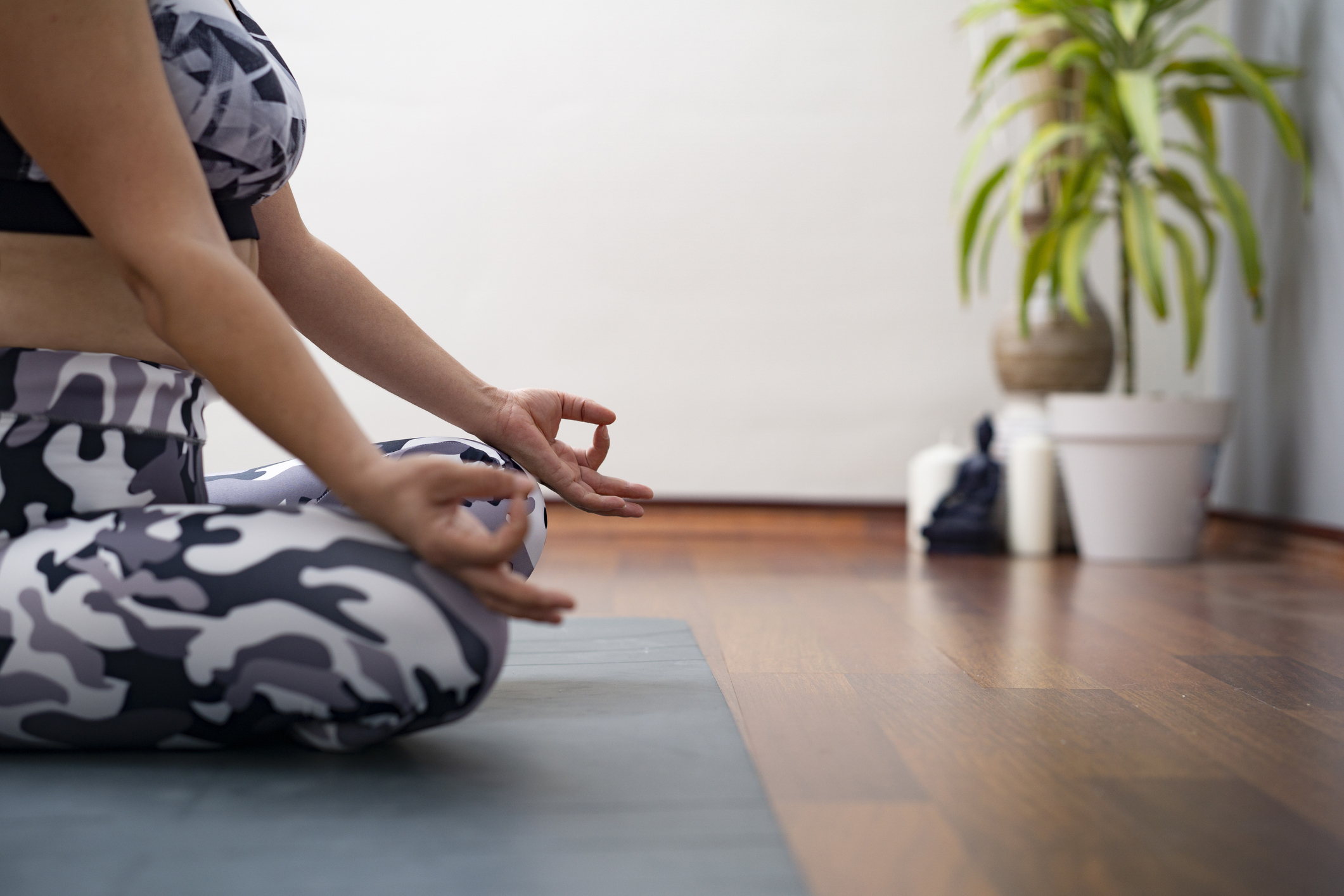
It can boost your physical fitness
Did you know? Post-menopause, the depletion of oestrogen in your body can lead to osteopenia or osteoporosis (weakened bones), sarcopenia (depleted muscle mass), and even risk of cardiovascular disease.
That's where menopause yoga comes in. "The more resistance-based elements of the practice can help to improve bone strength and thereby prevent osteopenia," shares Coveney.
It can release tension
You'll probably know that changes to your reproductive hormones during menopause can result in mood swings, irritability and even insomnia. "Reduced oestrogen specifically affects cognitive function, often causing increased levels of anxiety and overwhelm," explains the yoga teacher.
Menopause yoga, on the other hand, tackles these symptoms, relieving stress and anxiety through breathing practices and mindful movement. "This gentle exercise releases tension, and provides pause during a seemingly chaotic time," she shares.
Do note here: While yoga can help alleviate some of your menopause symptoms, it can't relieve all, and shouldn't replace a visit to your doctor if you are struggling with your symptoms. Yoga cannot replace your loss of oestrogen, which is the underlying cause of most menopause symptoms, and is most effective as part of a holistic package of self-care that can includes HRT, nutritional advice, therapy, and complimentary therapies like massage and acupuncture.
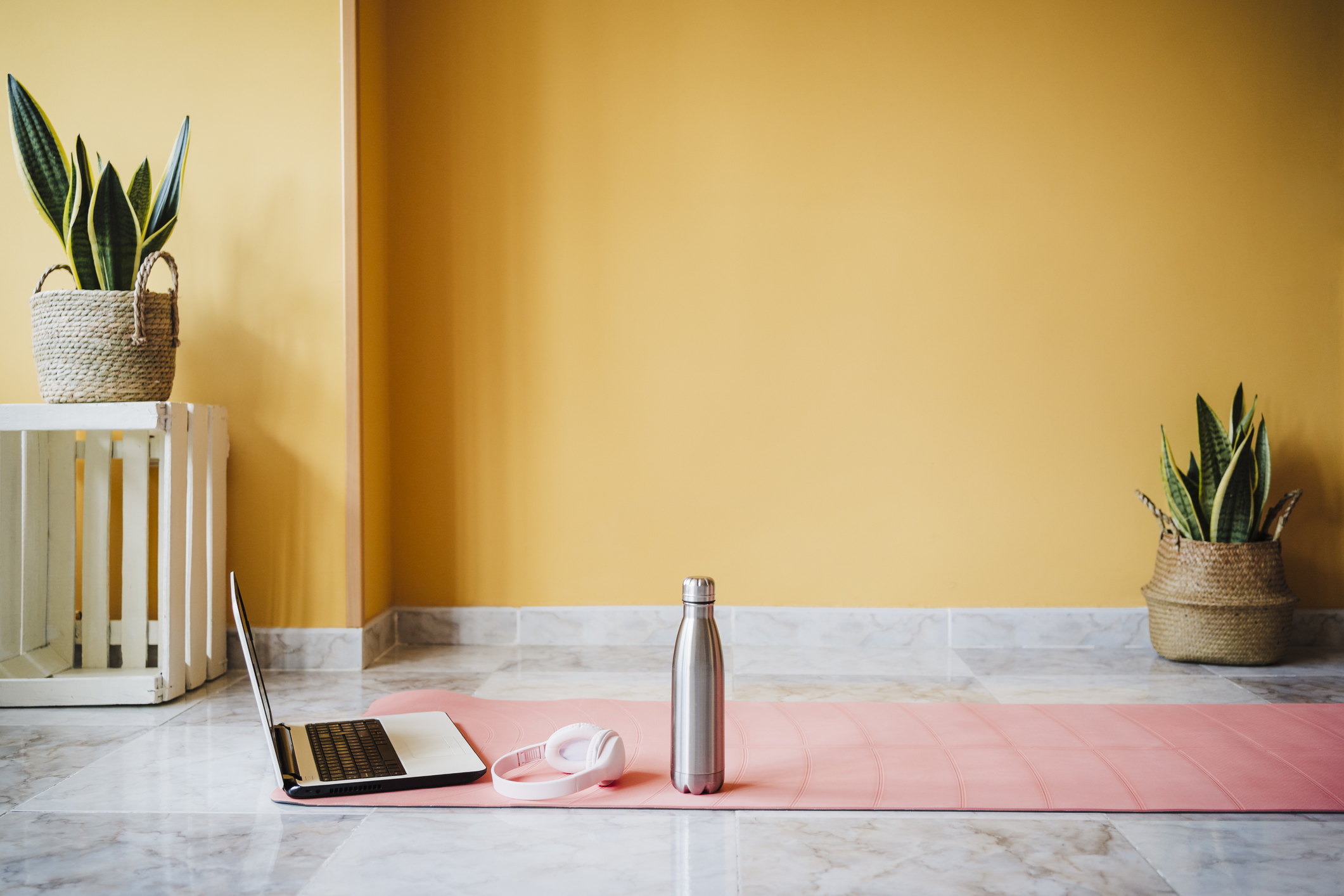
Your menopausal yoga guide: 5 moves to try now
First up, ask yourself how you're feeling, as the type of yoga that will help you will be dependant on this.
If you're experiencing hot flushes, try: reclined butterfly or cobblers pose
Feeling flustered? Yoga that'll help you to cool you down physically and emotionally will be ideal.
"Restorative yoga, cooling breathing techniques, calming meditation and learning to relax can help you," shares Coveney. "Rather than resisting and fearing your hot flushes, relax and soften into them so that they flow through you and pass more swiftly. Resisting them will only make them last longer, feel hotter and more overwhelming."
You need: A yoga mat, a yoga bolster (or cushions) and two yoga blocks (or cushions).
1. Place the block at one end of the bolster and the cushions on each side of the mat. Lie down on the bolster and bring the soles of your feet together, allowing your knees to drop out to the sides.
2. Place the cushions under your knees to support your legs. Rest here for five to ten minutes, allowing the physical sensation of heat to release from your hips, thighs, and armpits.
Enjoy the gentle opening stretch across your chest. Let the tension drain away and notice how the more you relax, the sooner the heat dissolves away.
3. Let go and relax - breathe in through your nose and then open your mouth to gently breathe out, making a sighing sound. Notice how relaxing your lower jaw softens your face and tension melts away. After four to six rounds of this sighing breath, you may choose to close your mouth and just breathe slowly through your nose.
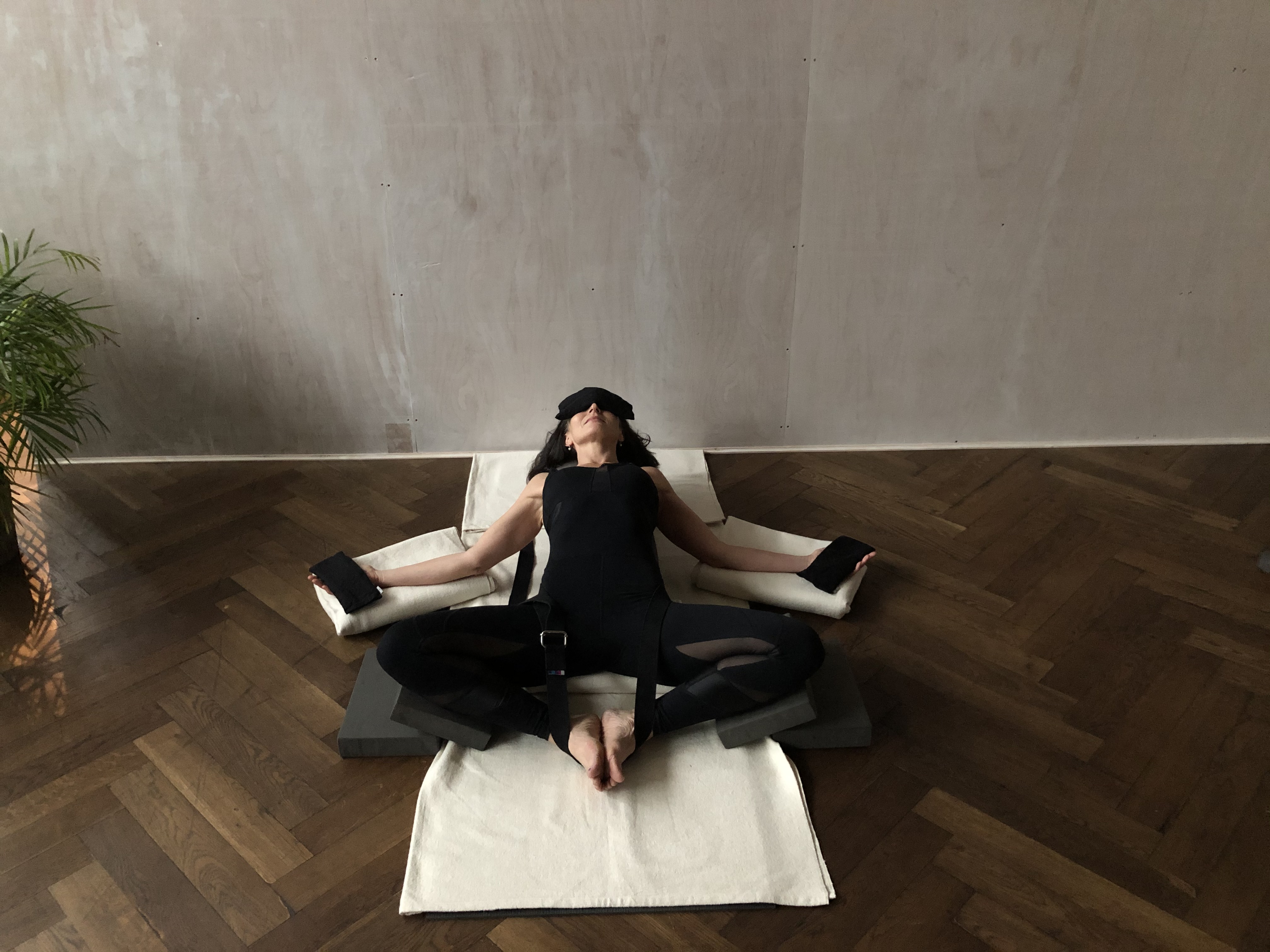
If you're feeling fatigued, try: legs raised on a wall
If you are suffering from extreme fatigue and insomnia, then a strenuous dynamic yoga practice will only make you feel more depleted," explains Coveney. Instead, opt for a restorative yoga pose, held for a minimum of five minutes and a maximum of twenty minutes. "This will help the nervous system to relax into what is called the parasympathetic nervous system (PNS) – your rest and digest response," she shares.
You need: a yoga mat, a wall, a folded blanket or cushion placed against the wall.
1. Place the short end of the mat up against the wall or chair, and the folded blanket or cushion.
2. Lie on your mat, so that your pelvis is raised slightly by the blanket, and raise your legs up against the wall.
3. Rest an eye pillow on your forehead or eyes and remain in the pose for five to eight minutes. If you feel cold, cover your body with a blanket and wear socks. To come out of the pose, simply bend your knees so the feet rest on the wall, then roll over on to one side of your body and sit up slowly.
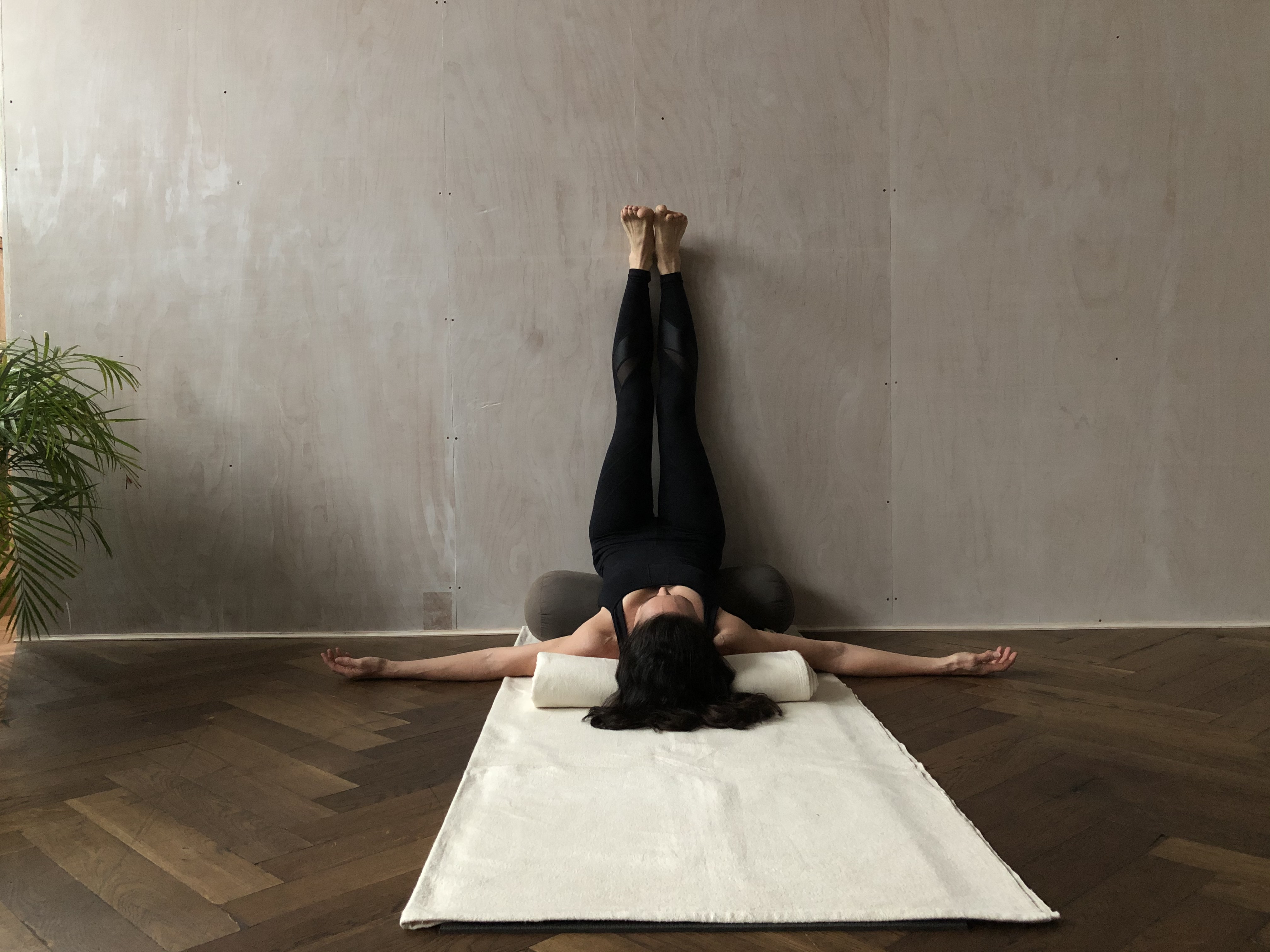
If you are stressed, try: downward dog
Did you know? When you're are stressed, you tend to hold physical tension. "This is where practising Downward Dog can be very helpful," shares Coveney. Why? "It stretches the spine and the back of the legs, which creates a feeling of physical and emotional release."
You will need: A yoga mat.
1. Place a bolster or pillow on the floor. Start on all fours, with the bolster in line with your head, your knees slightly behind your hips and your hands shoulder-width apart.
2. Then, tuck your toes under and gently lift your knees off the floor with your hands on the still placed firmly on the ground.
3. Straighten your legs as much as you can, as your forehead gently rests upon the bolster.
4. Using props enables you to stay in the poses for a longer period of time without tiring, and in doing so, pacifies the adrenal glands, tapping into your rest and digest nervous system. "At a time of great stress and anxiety, this pose induces a lovely sense of calm," explains Coveney.
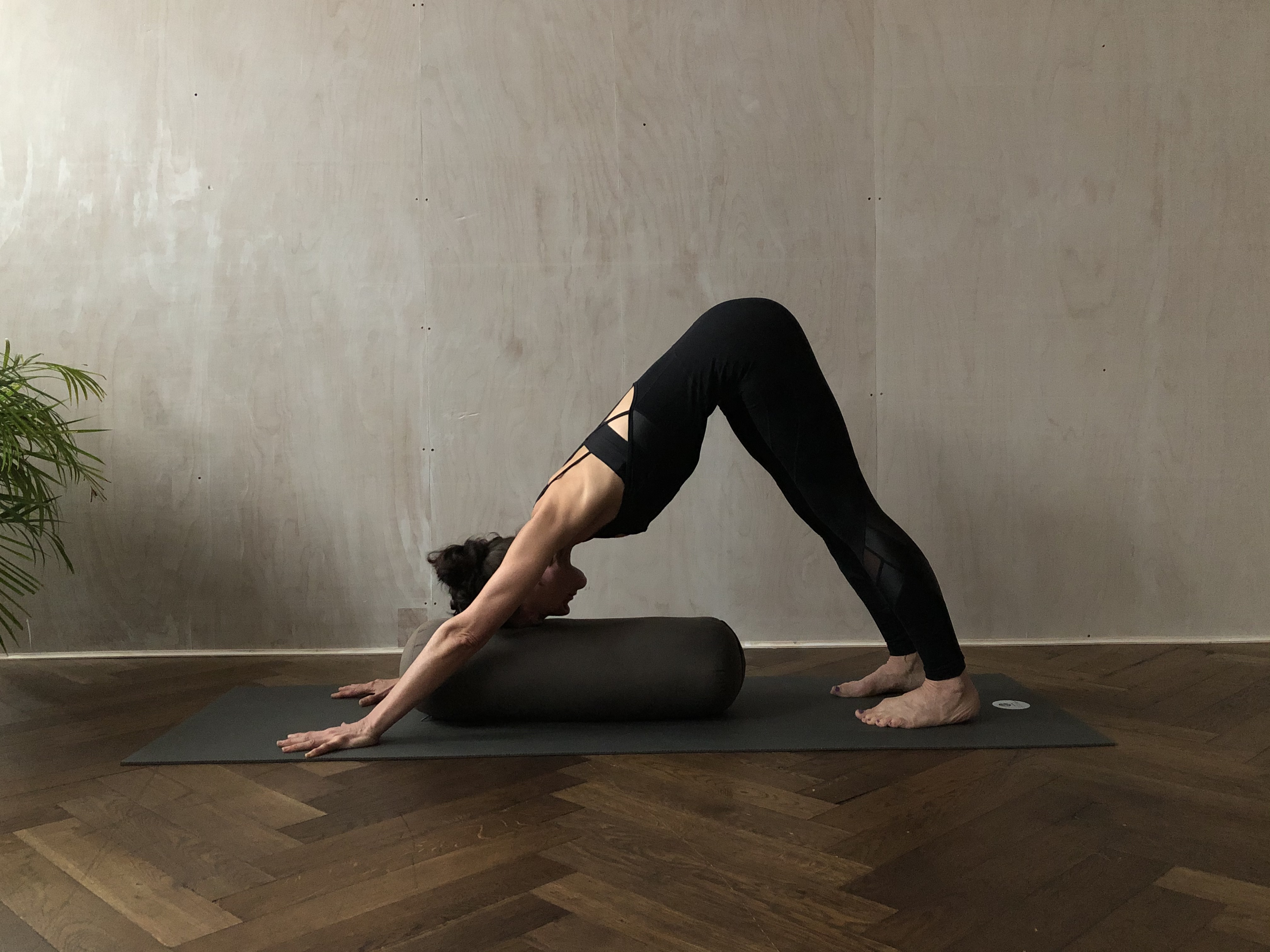
If you need a good stretch, try: child's pose
Child’s pose is a simple pose for stretching your hips and spine as well as calming your mind. "It is a go-to pose that can be practised for any perimenopause symptoms, but is especially soothing and calming when you are feeling overwhelmed," the expert shares.
You need: a bolster or cushion and a blanket to keep you warm.
1. Start kneeling on your mat and separate your knees out to the sides with your big toes touching.
2. Place the bolster between your legs, and gently fold forward, resting the front of your body onto the bolster. Relax your arms to the floor and breathe deeply as you turn your head to one side.
3. Option to place a blanket over your back and shoulders, and even take the blanket over your head if you’d like to ‘Disappear from the World’ for a few minutes. Stay in the pose for five to ten minutes, turning your head to the other side halfway through.
4. To come out of the pose, press down into your hands to lift your chest and sit upright.
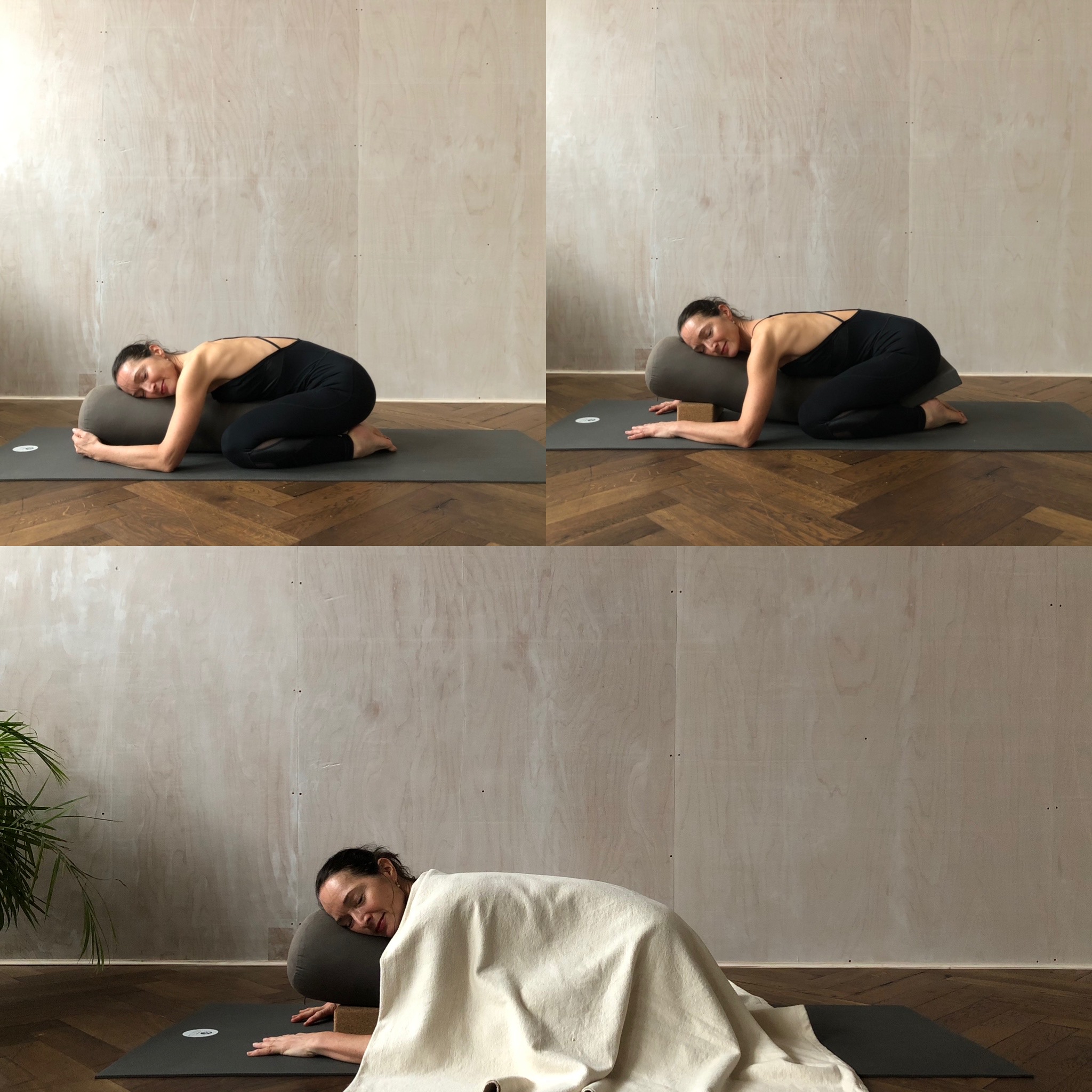
If you need a moment of calm, try: savasana
This one promises some serious chill.
You need: yourself.
1. Lie on your back with your knees bent and feet on the floor, hip distance apart. Rest the palms of your hands on your abdomen (around your belly button).
2. As you breath in through your nose, allow the breath to travel down into your abdomen so that you can feel your belly rise into the palms of your hands. As you exhale allow your belly to soften towards the mat beneath you. Imagine the abdomen is like a parachute that billows with the warm air beneath and deflates softly as you exhale.
3. Next, take a deep breath in through your nose and as you exhale, sigh out of your mouth making a ‘haaaa’ sound. Slow down your exhalation so that it is longer than your inhalation. It should sound soothing. This will calm your nervous system.
4. Continue this style of breathing, focussing your attention on movement of your breath through your body.
5. End by sitting in a comfortable position with eyes closed and noticing how you feel.

If you need to boost your positivity, try: a positive affirmation
Remember, yoga isn't just about the positions you flow through, but the breath and the affirmations, too. If you’d like to add a meditation, you can practice one of these positive affirmations or a mantra (repeated words) for a few minutes.
Breathe in and out and say to yourself: ‘I am safe, I am well.’ ‘I am peaceful, I am calm.’ Repeat ten times.
Petra Coveney's book, Menopause Yoga – a Holistic Guide to Supporting Women on Their Menopause Journey, is available to pre-order now.

Ally Head is Marie Claire UK's Senior Health and Sustainability Editor, nine-time marathoner, and Boston Qualifying runner. Day-to-day, she heads up all strategy for her pillars, working across commissioning, features, and e-commerce, reporting on the latest health updates, writing the must-read wellness content, and rounding up the genuinely sustainable and squat-proof gym leggings worth *adding to basket*. She also spearheads the brand's annual Women in Sport covers, interviewing and shooting the likes of Mary Earps, Millie Bright, Daryll Neita, and Lavaia Nielsen. She's won a BSME for her sustainability work, regularly hosts panels and presents for events like the Sustainability Awards, and is a stickler for a strong stat, too, seeing over nine million total impressions on the January 2023 Wellness Issue she oversaw. Follow Ally on Instagram for more or get in touch.
-
 Mytheresa is having a secret sale right now and these are the 11 cult items I'm eyeing
Mytheresa is having a secret sale right now and these are the 11 cult items I'm eyeingIncluding the designer bag that was everywhere at Milan Fashion Week
By Clementina Jackson
-
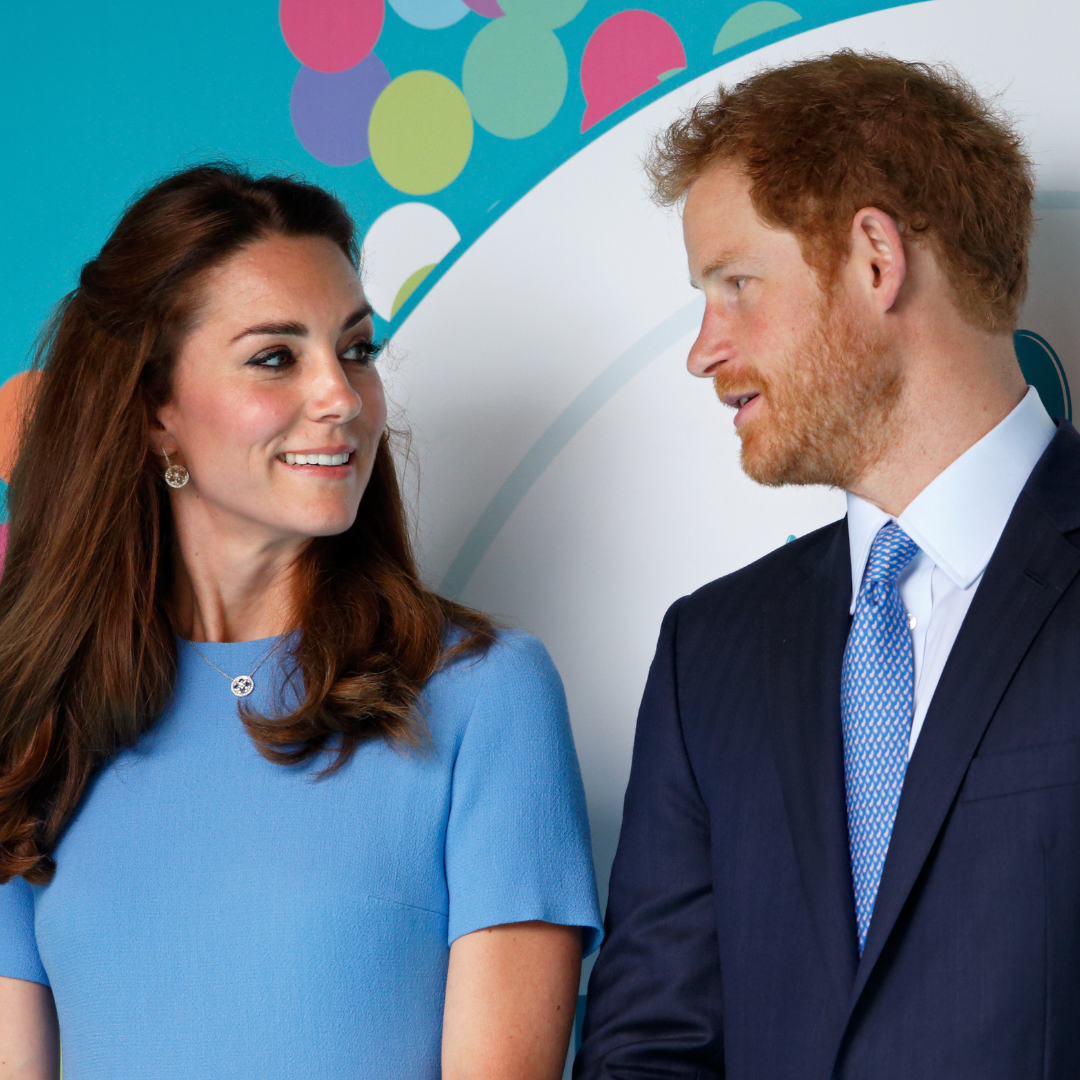 Prince Harry reportedly extended an 'olive branch' to Kate and William on latest UK trip
Prince Harry reportedly extended an 'olive branch' to Kate and William on latest UK tripBig if true
By Iris Goldsztajn
-
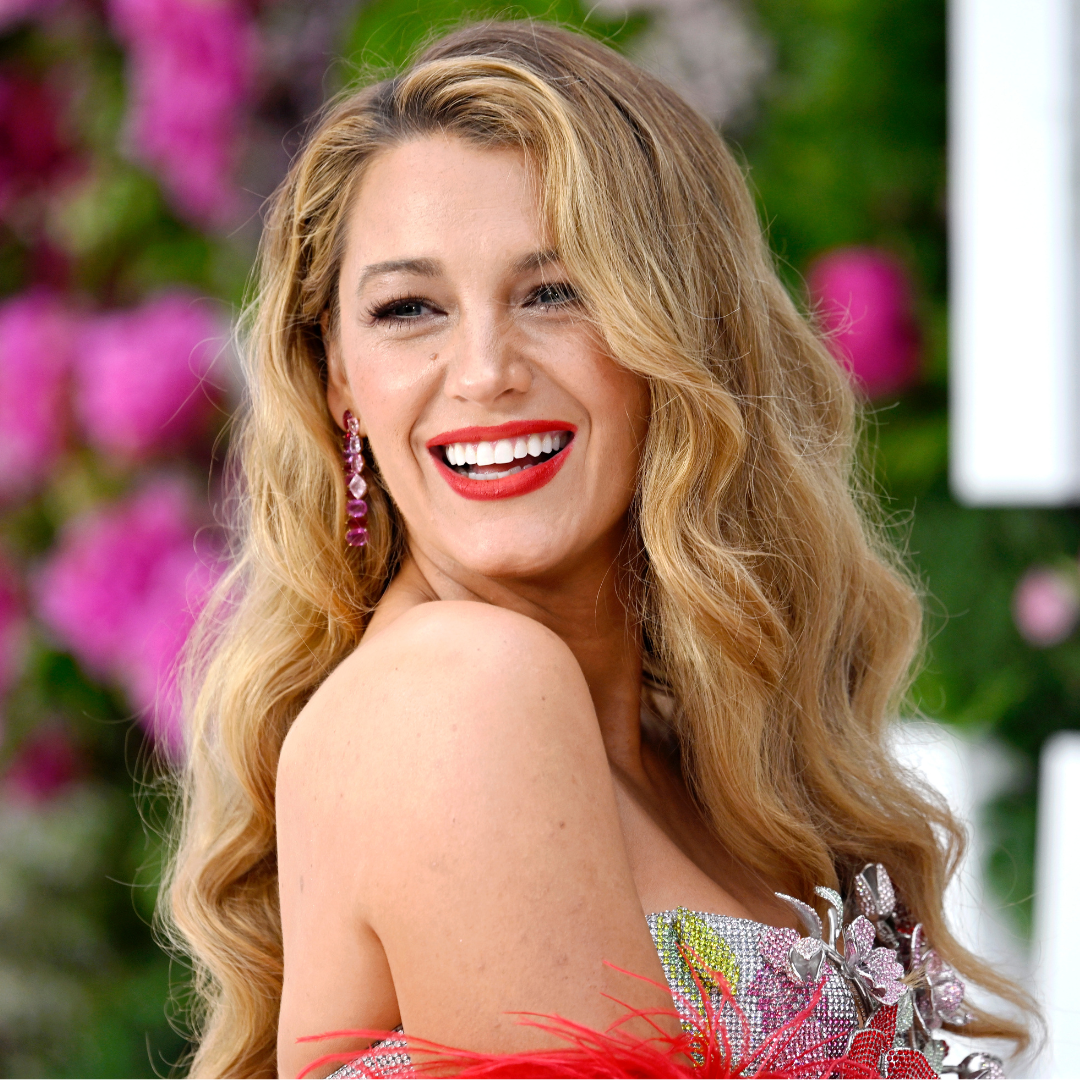 How Prime Video is protecting Blake Lively amid her new movie promo
How Prime Video is protecting Blake Lively amid her new movie promoAn understandable move
By Iris Goldsztajn
-
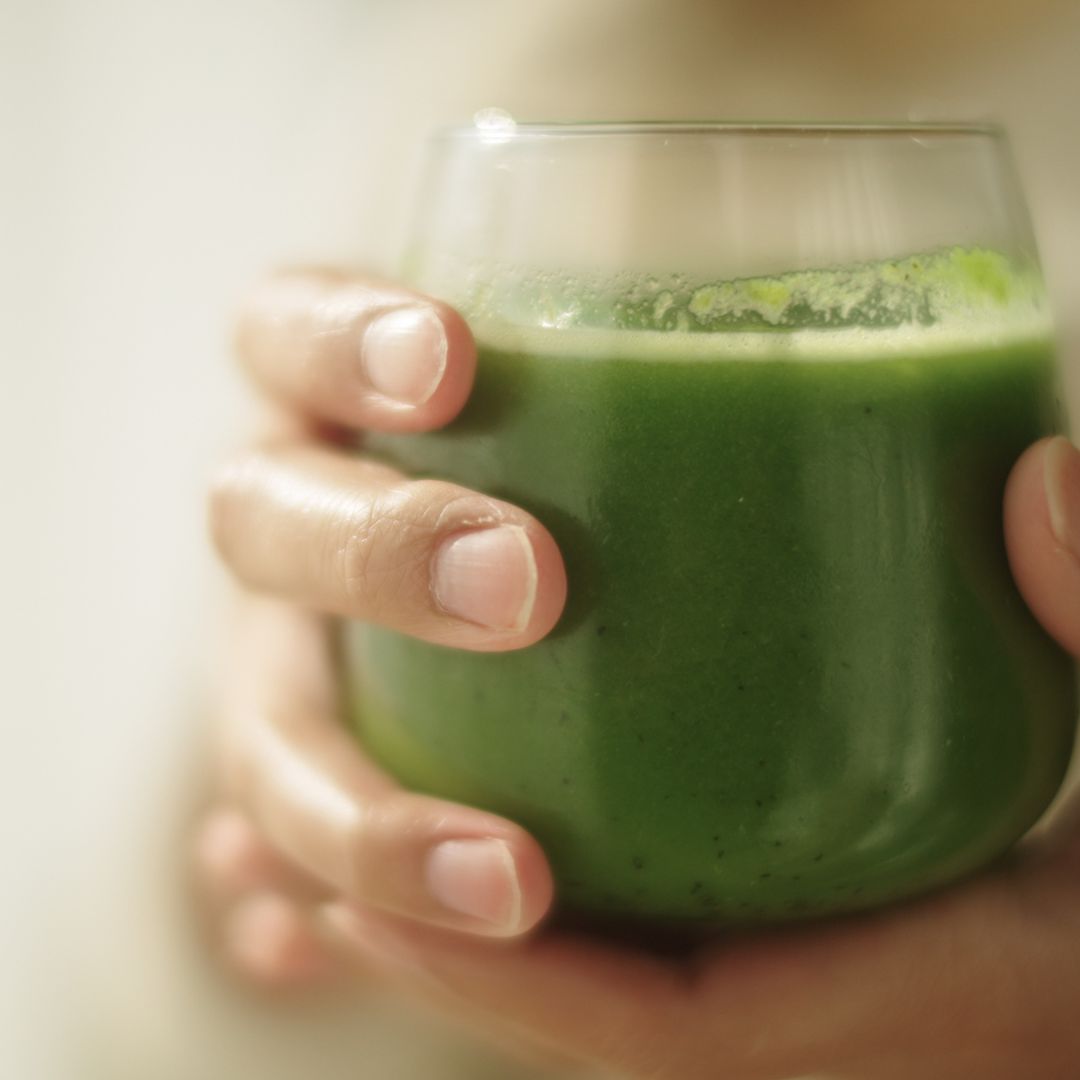 10 common nutrition myths a registered dietician swears they'd never follow - and wants you to avoid, too
10 common nutrition myths a registered dietician swears they'd never follow - and wants you to avoid, tooYou might find these surprising...
By Katie Sims
-
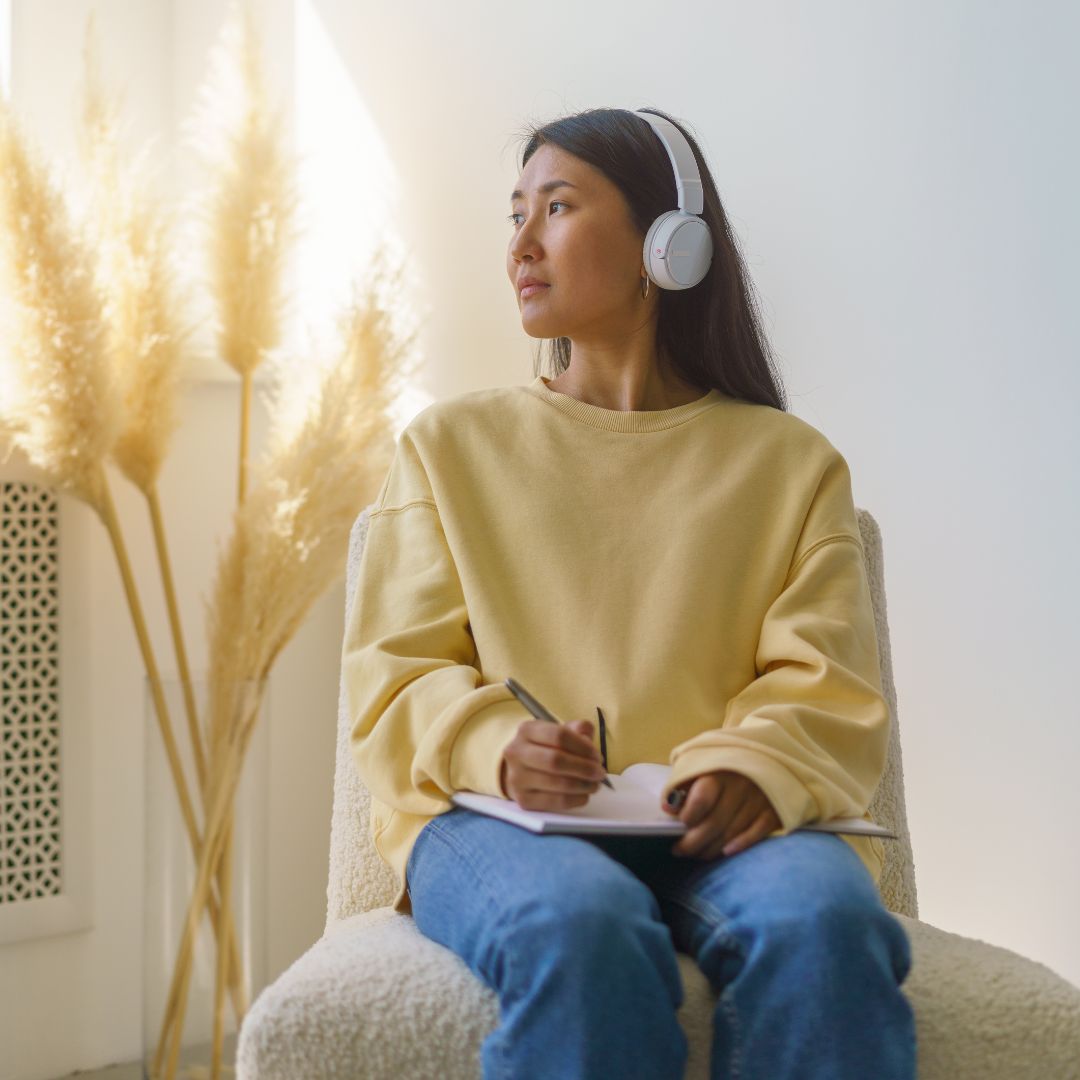 As Mel Robbins' Let Them theory gains global traction - how the simple tool promises to transform your life
As Mel Robbins' Let Them theory gains global traction - how the simple tool promises to transform your lifeNot to mention, help you take back control.
By Katie Sims
-
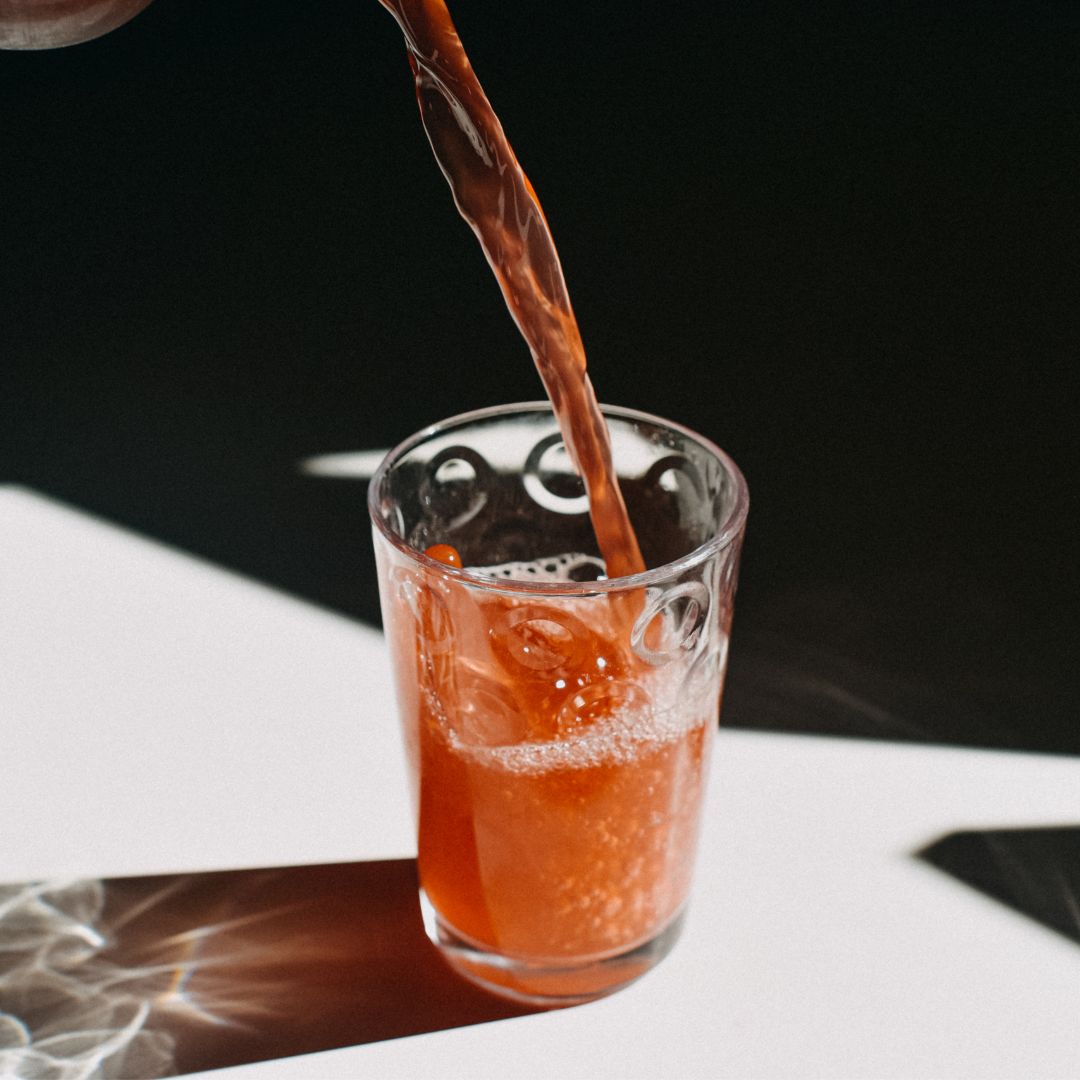 Been consistent with your probiotic supplements but not feeling any different? 5 simple reasons why
Been consistent with your probiotic supplements but not feeling any different? 5 simple reasons whyDaily supps not boosting your wellbeing?
By Ally Head
-
 I'm a leading wellness expert - and always turn to these 5 simple prompts before saying yes to a decision
I'm a leading wellness expert - and always turn to these 5 simple prompts before saying yes to a decisionAlways feel torn? Consider this your bible.
By Adrienne Adhami
-
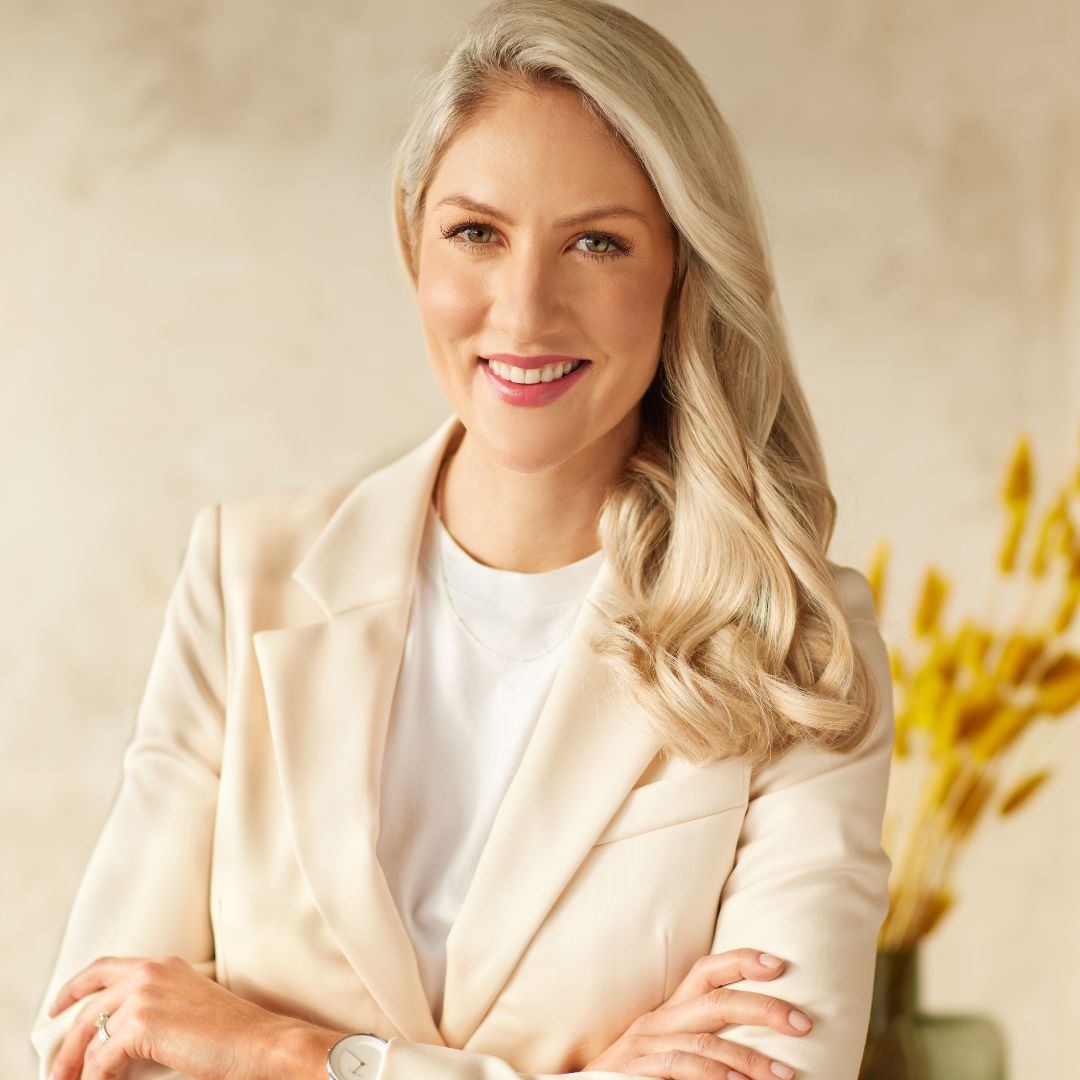 Wondering whether you should take probiotics? As a world-leading gut health scientist, you might be surprised by my take
Wondering whether you should take probiotics? As a world-leading gut health scientist, you might be surprised by my takeIn an MC UK exclusive, we deep dive into the latest research.
By Dr Megan Rossi
-
 As more brands launch their own alternatives, we ask top dieticians - do anti-glucose spike supplements actually work?
As more brands launch their own alternatives, we ask top dieticians - do anti-glucose spike supplements actually work?Seriously effective or serious fad?
By Anna Bartter
-
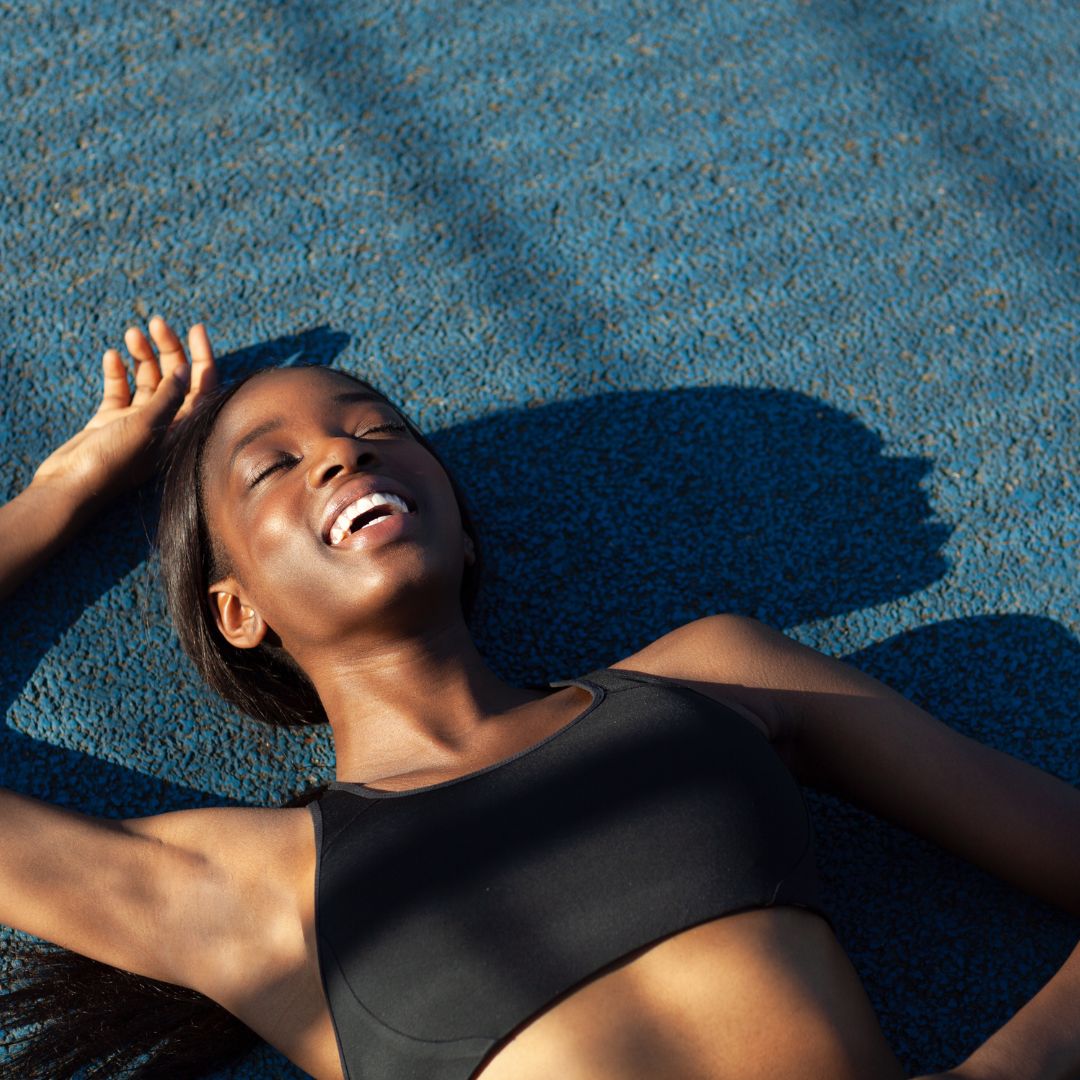 I'm a world-renowned psychotherapist - why mastering your emotions is the key to overall wellbeing
I'm a world-renowned psychotherapist - why mastering your emotions is the key to overall wellbeing"Authenticity involves acknowledging your feelings and deliberately deciding how to express them."
By Ally Head
-
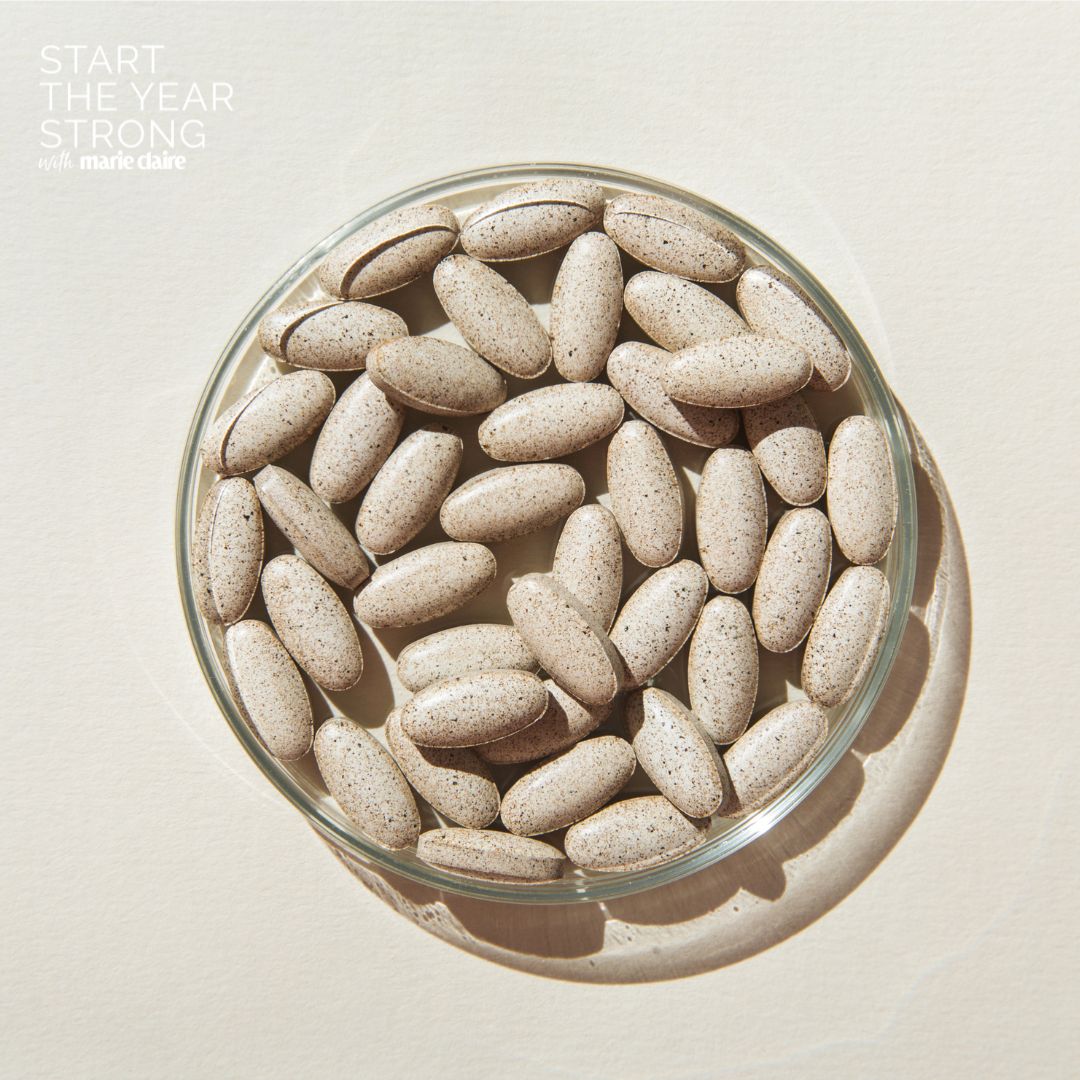 We asked anti-ageing experts for their honest take on the wildly popular NMN supplement - and they wouldn't recommend
We asked anti-ageing experts for their honest take on the wildly popular NMN supplement - and they wouldn't recommendCan a supplement ever really be the fountain of youth?
By Frances Daniels